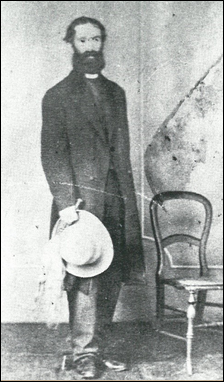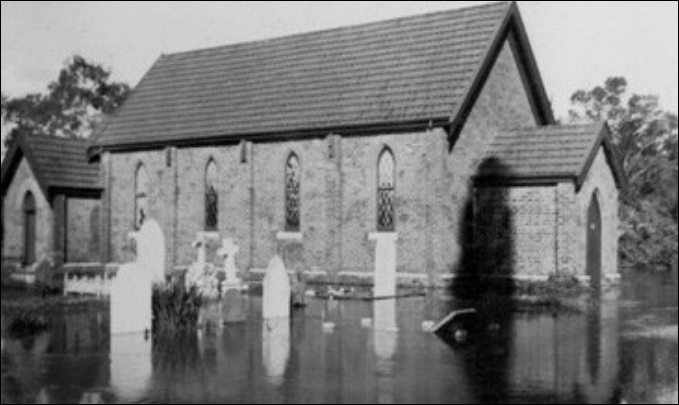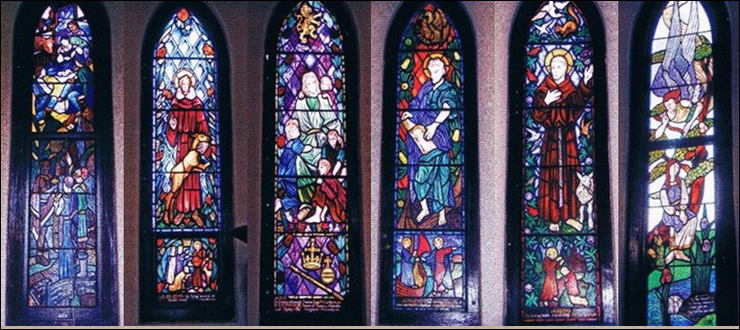Penny's talk this evening will concentrate on the history of the recently de-consecrated St John's Anglican Church in Pinjarra.
Penny referred to a photographic presentation showing some aspects of the St John’s church history in Pinjarra. (Much of the following information is taken from the Murray Districts Historical Society's website: https://www.murrayhistory.org.au/history/places-of-worship/01-st-johns-church-pinjarra
The current St John’s Anglican Church has now stood beside the Murray River in the heart of Pinjarra for over 155 years, surviving two world wars as well as notable floods in 1862, 1945 and 1955. It has been the site of countless sermons, weddings and christenings, and is one of the town’s oldest buildings.
The Early Church
The first Sunday service was held in February, 1842 in the “Barn” on George Bouglas’ farm, north of the Murray and Dandalup Rivers in the Ravenswood area. The service was conducted by Arch Deacon Wollaston. In 1842 religious services were conducted by Rev. George King when he visited the Murray District once a month. The first church was built in 1843 near to the current location. It was a rustic structure made with mud or gravel walls and thatched roof.
In 1860 the old church was dilapidated and it was decided to build a new church with the successful tender being Mr. A. Cornish. He used handmade bricks and shingles on the roof. Some of the carpentry work was done by convicts. The total cost of the building was nearly 300 pounds.
The new building was opened in December 1861 and was consecrated by Bishop Hale, dedicating it to St. John the Evangelist on the 19th April, 1863. The first Rector was Rev. James Smart Price and because there was not a rectory in Pinjarra he was obliged to board with people, two of which were the Cornish and Oakley families. (Coincidently, the Church's final Rector was also a "James"; Rev. James Tabor, a current member of the Rotary Club of Pinjarra).
 Rev James Price
Rev James Price
Reverend Price travelled extensively in the district, and painted many works on wildflowers. He and his wife were parents to 9 children.
He died in 1878 aged 47yrs. Three of his children died young and are buried at St Johns. His wife, Annie died at Fremantle in 1935 aged 91 yrs and also buried in the St. John's graveyard.
The family boarded originally with Mrs Oakley, and then the Cornish familywith the Diocese paying £75 as annual cost for accomodation with a stipend of £150.
The Glebelands were created 1866 where the rectory was built adjacent to the boat ramp. The building was rebuilt on higher ground in 1873 to avoid the regular floods, which had often left the residence as an island.
A letter written highlighted the work done by the Ladies Guild in raising funds to replace the church roof in Oct 1926. The shingles were replaced with red tiles but the heavy tiles eventually caused the recent roof deterioration, which lead to the deconsecration of the Church.
In 1862 the Murray River flooded quite drastically with the water reaching the church and flowing through the windows. The harmonium was destroyed as well as the service books. During Rev. Price’s time the erection of the vestry began and was opened in 1873 and served the purpose for 80 years.

He passed away in 1878 and was replaced by Rev. R.W.S. Alderson in 1879. The porch was added in this time, and two new rooms added to the rectory.
Between 1893-1900 repairs were carried out to the parsonage and chancel, and a new altar frontal. A brass cross and candlesticks were procured, also a set of alter vessels and two sets of alter linen were presented.
Following an enquiry from historian Fiona Bush, 3 of the stained glass windows at St. Johns were identified as the work of Gower & Brown. Their work was signified by the addition of a small Red Setter dog on the glasswork. Initially the dogs were not seen but Fiona identified the work. A window dedicated to the memory of Ross and Violet McLarty proved to be the work of Gower & Brown but the signature dog was not present.

The Centenary of St. Johns was 21st May 1961 a celebration was held. Penny confirmed there are several unmarked graves at the church and a project to identify these needs funds. There are also some graves unmarked under the bridge.
Gordon McLarty commented that some missing headstones had been made of wood, and were washed away by floods. One of the headstones in the graveyard refers to a "Mister", rumoured to be the person who shot the man who shot Nelson at Trafalgar. This rumour can not be substantiated.
Willie thanked Penny for her fascinating talk on St. John's Church, and invited the members to thank her in the usual manner with a round of applause.
